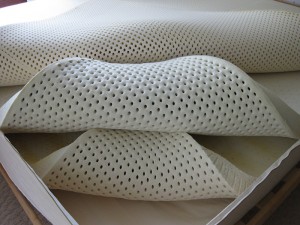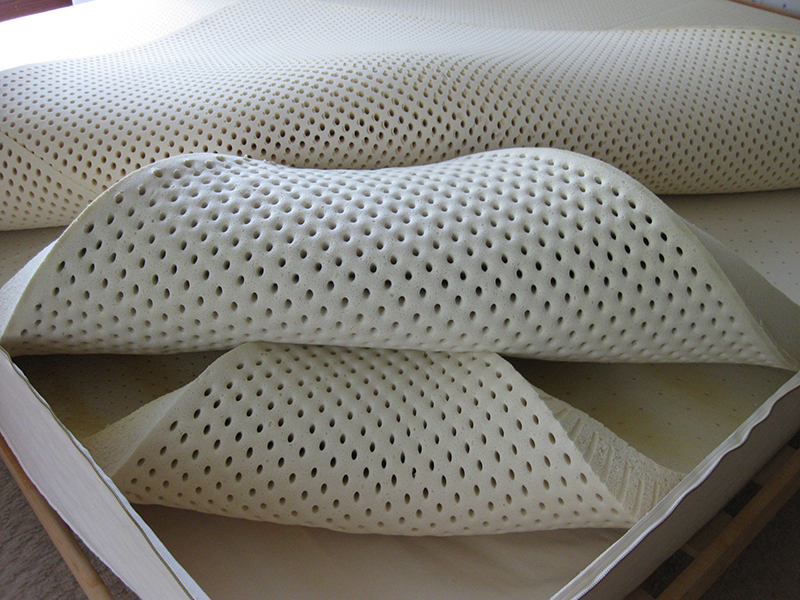 Latex foam beds draw comparisons to memory foam, and it’s no wonder why. Both beds offer supreme comfort and excellent back and neck support. Latex beds offer something a bit more, especially if you purchase a natural latex mattress.
Latex foam beds draw comparisons to memory foam, and it’s no wonder why. Both beds offer supreme comfort and excellent back and neck support. Latex beds offer something a bit more, especially if you purchase a natural latex mattress.
Feel
Memory foam has a kind of cloud-like feel that is undeniable, but based heavily on how the bed is constructed. If the mattress is too thick, the bed quickly becomes a heat trap with above-average firmness.
Latex feels springy, akin to a spring mattress, which can offer greater support to the back and neck depending on how the bed is made. You get that pressure support at a cheaper cost than memory foam, which would demand a high density foam material for the same quality.
Health
A natural latex mattress topper is processed using only food-grade chemicals, which means that you don’t inhale harmful toxins while you sleep. That can help cut incidents of disease, respiratory problems or prevent what is known as “off-gassing.” A mattress that emits harmful or toxic fumes is said to “off-gas,” which gives off toxic fumes. Based on consumer surveys from websites like “Sleep Like the Dead,” latex has lower occurrences of off-gassing.
Final Thoughts
Both mattress types offer superior comfort in terms of relieving back pain, and tackling pressure points. Latex mattresses offer a lower-priced alternative to memory foam, and they are healthier for consumers too. Latex is even the better choice for couples with different sleeping habits, especially for movement isolation.
Bio: Carlo Badalamenti, marketing director for Foam Factory, offers tips on using foam around the house. Foam Factory offers latex and memory foam mattresses, and ships to anywhere in the United States or Canada.
